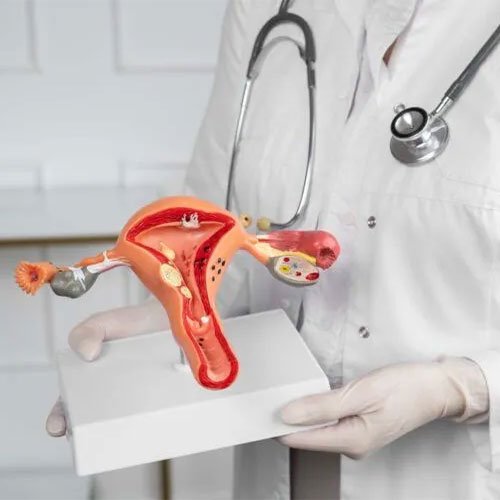
Gynecology Surgery
Gynecology Surgery
Gynecology surgery and treatment encompass a range of medical interventions and procedures aimed at addressing various conditions and diseases affecting the female reproductive system. These treatments can be surgical or non-surgical and may be performed by gynecologists or specialized surgeons.
Gynecology surgery and treatment play a crucial role in women’s health, offering solutions for a variety of reproductive health issues. Advances in minimally invasive techniques have improved recovery times and reduced complications, allowing women to return to their daily lives more quickly. It’s essential for individuals experiencing symptoms related to their reproductive health to consult a healthcare provider for proper diagnosis and treatment options.

Common Gynecological Conditions Treated
- Fibroids: Noncancerous growths in the uterus that can cause pain, heavy menstrual bleeding, and other symptoms.
- Endometriosis: A condition where tissue similar to the lining of the uterus grows outside it, leading to pain and fertility issues.
- Pelvic Inflammatory Disease (PID): An infection of the reproductive organs often caused by sexually transmitted infections, which may lead to chronic pain or infertility.
- Ovarian Cysts: Fluid-filled sacs on the ovaries that can cause discomfort and hormonal imbalances.
- Uterine Prolapse: A condition where the uterus descends into the vaginal canal due to weakened pelvic floor muscles.
- Cancer: Gynecological cancers include cervical, ovarian, uterine, vulvar, and vaginal cancers, which may require surgical intervention.
Types of Gynecological Surgery
Hysterectomy: The removal of the uterus, which may be necessary for severe fibroids, endometriosis, or cancer. This can be performed through:
- Abdominal Hysterectomy: Through an incision in the abdomen.
- Vaginal Hysterectomy: Through the vagina.
- Laparoscopic Hysterectomy: Minimally invasive surgery using small incisions.
Myomectomy: The surgical removal of fibroids while preserving the uterus, ideal for women wishing to maintain fertility.
Laparoscopy: A minimally invasive procedure using small incisions and a camera to diagnose and treat various conditions, including endometriosis and ovarian cysts.
D&C (Dilation and Curettage): A procedure that involves scraping the uterine lining to diagnose or treat abnormal bleeding or miscarriage.
Tubal Ligation: A surgical method of permanent birth control involving the blocking or cutting of the fallopian tubes.
Oophorectomy: The removal of one or both ovaries, often performed in cases of ovarian cysts or cancer.
